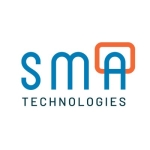What is our primary use case?
In the past, we have used UiPath to automate repetitive manual processes for companies in the finance and banking sectors, but healthcare is our current focus. This industry involves processing tons of data from patients, customers, and doctors, so it's a huge field.
Previously, I developed bots for compliance at financial companies. I've also created processes for reading PDFs, sending emails, Excel automation, logging, and exception handling. We have also contracted with insurance companies that need to pull data from emails into their main enterprise application.
How has it helped my organization?
The healthcare companies cannot provide us with direct access to their systems for security reasons. We are currently accessing their network through a middleware system so it doesn't compromise their security. UiPath doesn't work on that third machine and cannot retrieve the values as it should. If we scrape data from the web, it will get to the HTML that is behind the site.
When we are accessing the third PC, we cannot get to it because it is a desktop machine. We are using the completed version activity, which is working mainly on the image image-based activity. This capability is available in UiPath, but I don't think Power Automate or Automation Anywhere can do this. It helps because we don't need to do any coding.
UiPath tends to be deployed on the cloud, so clients can minimize their on-premise footprint. We deploy on-premise and cloud-based UiPath depending on what our clients want. For some companies, uploading data to the Orchestrator on the cloud is potentially a security concern that hasn't been resolved by the UiPath developers. Power Automate has an advantage in that regard.
Our employees use the company's credentials to get training from the UiPath Academy and obtain certifications. I have a personal account on UiPath Academy, but it has some license issues. The academy is helpful because UiPath is implementing new features every three months or so. It's all about the documentation. We can learn about new features and do more. With more knowledge, we can develop something bigger.
UiPath reduces costs by eliminating human labor. Let's use an insurance company as an example. Let's say they have employees who are responsible for reading emails. Every day, they receive information via email from the customers, and their job is to retrieve the details and enter them into the main database. The average insurance company receives 400-500 emails daily. These people will spend the whole day completing the task of manually transferring data to their main application.
We have a bot in pre-production that can handle 1,100 emails daily for the company. It has a significant impact on the efficiency of the operation because the bot can input the details into the database quickly and without any errors. The employees who were responsible for this work are now monitoring it and also learning about UiPath at the same time. It is a great tool for increasing productivity, thereby proportionally increasing the company's profits.
The first company I worked with had 20 employees in their compliance department working on some PDFs. The company had to send emails to around 6 million customers. We deployed the bots, and five bots could do the work of 10 employees. The company kept the other 10 employees but reassigned them to monitor the bots and fix errors. They also learned to develop their own bots. They could cut 10 positions and save money while improving productivity. Those employees weren't working as fast as the bots and cost more money.
The solution also greatly reduces human error. In the financial compliance use case, they were dealing with upwards of a million rows. That was labor-intensive work, and no human could complete the task in under three days manually. Sometimes, we would have some errors in which the values were reversed by accident because humans make mistakes when they are tired. In this kind of work, we're working with digital amounts and currencies, and we are applying mathematical formulas to the amounts, like credit, debit, or some business calculations.
UiPath doesn't have large hardware or software requirements. We only need one physical PC on the client's premises. That computer requires some minimum specifications, such as a 1 terabyte hard drive and an i5 processor. We need that computer hardware and a license for the client.
If the client doesn't want to purchase an enterprise license, UiPath offers a community version. There are no restrictions on the features, but it can only run one bot at a time. The enterprise version can run multiple bots. If our client only needs one process, we can provide them with the community version and deploy it on their PC.
UiPath can free up employees to work on more important things. One of my colleagues was doing some tedious work manually, but once the bot was in place, he only needed to click one button to run UiPath, which extracts all the data and updates the Excel spreadsheet in 10 or 15 minutes. Previously, he spent up to six hours preparing the data before he could complete the other tasks. The important work was being delayed every time. It increases productivity, which benefits the company.
What is most valuable?
UiPath's most valuable features are its UI automation activities like scraping and manipulating data. We need to scrape the data before we can manipulate it or save it in another application. I think that part is very valuable and important.
Having worked with other tools like Microsoft Power Automate and Automation Anywhere, I find UiPath to be the most user-friendly because it provides all the actions on the side, and we can just drag and drop them. It's a simple interface that we can easily understand. Automation Anywhere has a more complex interface. UiPath is straightforward enough that our junior employees can easily pick it up.
UiPath's ability to offer end-to-end automation is critical. We typically provide our clients with a simple demo of what UiPath can do. After that, they provide us with details about their end-to-end processes, which we use to determine what can be implemented through UiPath.
For our healthcare client, the initial assignment was to scrape the data from the website and put it into Excel. Later, they decided that they wanted the data in another application, so it could be stored in the main database. We constructed an end-to-end process for maintaining a million records in their primary database.
I also like the UiPath Community forum. I go there when I get stuck with anything. When I run into an error, it's easy to find the answer. The community is highly active. If I post a question, I can usually get a response from community members in an hour or two.
I have tried a bot that uses UiPath's AI capabilities, but I didn't develop it. It's a portal for patients to make appointments and check into reception at the hospital. We implemented ChatGPT on an Android device, so customers can ask questions and get information.
We also developed a bot that can derive the same types of data from PDFs with different structures and formats. For example, let's say the patient's name is on the first row on one form, but on the third row on another. We can configure a bot to extract the name regardless of where it is. We can train our ML module by telling it when the data is wrong and running it again. Now, it's mostly accurate.
What needs improvement?
I would like UiPath to improve its screenshot feature. It should have the option not to take screenshots unless the user specifically allows it. Sometimes, it is a security issue for companies that do not want to share screenshots of the main application. Another thing I want to see is a standalone mobile application that we can run anywhere. I would like more cross-platform application support.
UiPath can get unwieldy if the process becomes too big and complex. I had one client based in Saudi Arabia that had an application with 1,500 pages. Once the bot we were developing got much bigger, the application started having stability issues. It performs well in typical cases, but once we exceed that average, the application starts to crash or behave abnormally.
For how long have I used the solution?
I have used UiPath for four years.
What do I think about the stability of the solution?
Overall, UiPath is stable for most processes, but Power Automate is better at handling large, complex projects.
Which solution did I use previously and why did I switch?
I have worked with Microsoft Power Automate and Automation Anywhere. The primary advantage of UiPath is that it's more accessible than the other solutions. You can learn UiPath without any knowledge of programming or computer science. It takes only about a month to learn the tool, even if you have no skills. For example, if you're a blogger and you want to automate posting to the website, you can do that through UiPath, so it is beneficial for personal use and commercial use.
The other advantage is cost savings. UiPath saves organizations some money, and it's more accurate than Power Automate or Automation Anywhere. Automation Anywhere is my third choice. Power Automate comes in second place because It was developed by Microsoft, and most enterprise companies have a Microsoft subscription. If their license includes Power Automate, they prefer to use that instead of buying a separate subscription for UiPath.
Many companies are switching to Power Automate because of this bundled licensing. The UiPath enterprise subscription is somewhat expensive. Microsoft can provide the same functionality, and it integrates with tools like Excel and Outlook. Companies can get all those tools within the same license, so that's an advantage Power Automate offers over UiPath.
Another advantage of UiPath is that you can also work with image-based processes. If we cannot get any selectors or access the HTML code behind the application, we can use image-based processes. This feature isn't available in Automation Anywhere. UiPath has the AI center, and Microsoft also implements AI in Power Automate processes. However, Automation Anywhere cannot use AI in their product.
How was the initial setup?
My current company is smaller, so I'm responsible for multiple tasks. I am the requirement gatherer, developer, and deployer. At my previous company, they had a business analyst who talked to the client and made an inventory of their requirements that he provided to us. Then, my only task was to develop the bot. It was the other team's duty to deploy the bot on the client's physical machine.
The process involves three steps. We need to connect UiPath and provide the logs. Our client can access the Orchestrator to see logs of what the bot is doing online. He doesn't need to physically access the machine. There is also middleware called the UiPath Assistant that we use to connect UiPath to the Orchestrator.
The number of staff needed for deployment depends on the complexity of the processes. If it is a single process, we don't need a deployment person or team. The developers can deploy the bots. My company has five developers, so everyone is developing their own bots and handing them over to the deployment team. For every five developers, we have two deployers. If the five developers are developing automated bots daily, we need only two deployers to deploy them on the machine. Also, if we want to have a backup version, we can deploy it on GitHub to make the repository and organize everything.
The maintenance aspect can sometimes be difficult. Exceptional cases can arise during the process. When we initiate some processes, we need to monitor them for about 30 days. We don't monitor some processes because we're not seeing any errors or exceptions. We have to monitor other bots, stop them as needed, handle the exception, and run them again. After 30 days, the bot should be mature enough to handle the exceptions without intervention.
What was our ROI?
UiPath offers an excellent return. For example, a recent client in Pakistan was scraping data from a website with 349 products. His job was to scrape the title, price, and variants and place the data in an Excel spreadsheet. He was working all week alone, so I proposed UiPath. I told him UiPath has a function called "Extract Data Table" that can scrape all the details of the products and just dump it into Excel in five or ten minutes. He was impressed, and I developed the bot in front of him.
Now, he's running my bot and dumping all the results in his Excel sheet. He's also working on other projects, and his routine has become very stable. He has more time to spend with his family. It has surely made an impact and yielded a positive ROI.
What's my experience with pricing, setup cost, and licensing?
I don't know the exact cost, but UiPath is more expensive than Power Automate and Automation Anywhere.
What other advice do I have?
I rate UiPath seven out of 10. Learning a little JavaScript coding is helpful because there are some scenarios in which UiPath doesn't help you. In some cases, you may need to write a little code to perform some actions or call some functions. I would also take advantage of the UiPath Academy so you can stay up to date on the latest news and features.
Disclosure: PeerSpot contacted the reviewer to collect the review and to validate authenticity. The reviewer was referred by the vendor, but the review is not subject to editing or approval by the vendor. The reviewer's company has a business relationship with this vendor other than being a customer: Partner





















